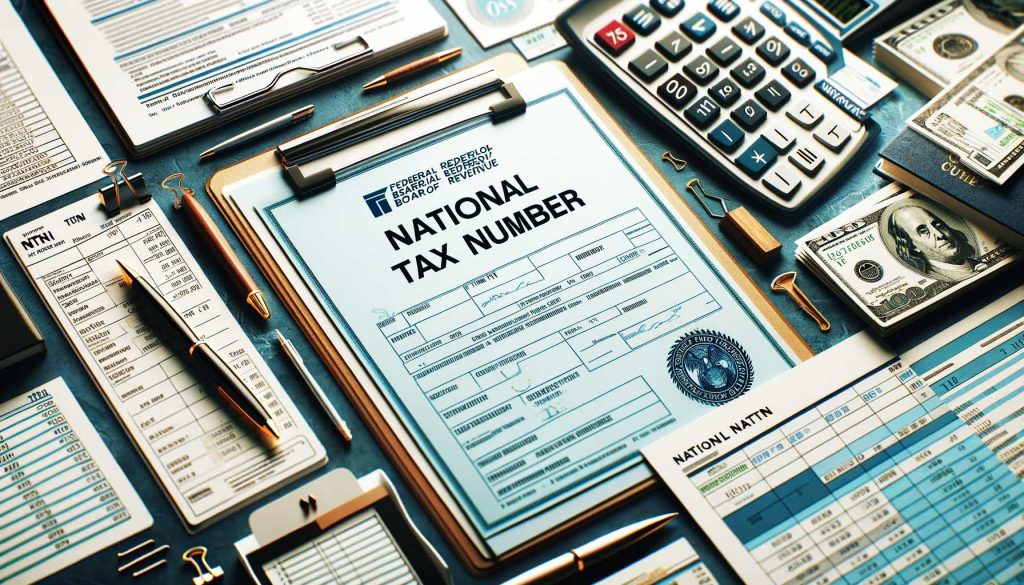Sole proprietorship is one of the simplest forms of business ownership, making it a popular choice for many entrepreneurs. In this comprehensive guide, we’ll explore the world of sole proprietorship, exploring its various types, advantages, disadvantages, and providing practical insights to help you make an informed decision for your entrepreneurial journey. If you’re considering starting a sole proprietorship, it’s worth noting that, like partnerships, this business structure also comes with its own set of advantages and disadvantages.
In the context of starting a sole proprietorship, it’s important to note that the process of registering your e-commerce business in Pakistan follows similar fundamental principles, such as business name registration and obtaining the necessary licenses and permits.
What is a Sole Proprietorship?
Sole proprietorship is a business structure where an individual is the sole owner and operator of the business. In legal terms, the business and the owner are considered one entity, which means that the owner is personally responsible for all aspects of the business.
Understanding Sole Proprietorship is like the first step in building your dream house, while learning How to Create a Professional WordPress Website is like designing and decorating the rooms to make it uniquely yours
Types of Sole Proprietorship
Before we dive into the pros and cons of sole proprietorship, it’s important to understand the different types:
1. Small Independent Business
This is the most common type of sole proprietorship. It includes small, independently owned businesses where the owner is the primary operator. Examples include local retail shops, freelance services, and individual consultants.
In the realm of sole proprietorships, small independent businesses stand out as the most prevalent form. These are businesses where the ownership and operation are in the hands of a single individual. Typically, these businesses are characterized by their local, personalized nature and include a variety of enterprises such as local retail shops, bespoke freelance services, and individual consultants. The owner not only manages the business but is also intimately involved in its day-to-day operations, offering a direct line of communication and a personalized touch to their clientele. This model allows for greater flexibility and a deeply personal approach to business, often leading to strong community ties and a unique understanding of customer needs.
2. Home-Based Business
Many sole proprietors operate their businesses from home. These can range from online businesses and e-commerce to home daycare services and consulting services. Working from home offers flexibility and cost savings.
Operating as a sole proprietorship from home presents a versatile and cost-effective approach for entrepreneurs. This structure is ideal for a variety of ventures, including online retail, e-commerce platforms, home-based daycare, and consulting services. One of the significant advantages of a home-based sole proprietorship is the flexibility it offers, allowing business owners to manage their schedules and work environment. Additionally, it reduces overhead costs significantly, as it eliminates the need for separate office space. This setup is particularly appealing for those starting out or looking to maintain a manageable work-life balance.
3. Franchisee
In the franchising world, a sole proprietorship structure is often adopted by individual franchisees. This arrangement entails the franchisee owning and independently operating their franchise location, while adhering to the broader guidelines and business framework provided by the franchisor. This model combines the autonomy and simplicity of a sole proprietorship with the established brand recognition and support system of a franchise, allowing entrepreneurs to capitalize on a proven business model while maintaining personal control over their business operations.
Pros of Sole Proprietorship
1. Ease of Formation
Setting up a sole proprietorship is often the easiest and least expensive way to start a business. There are minimal formalities and paperwork requirements.
Example: Susan had a passion for baking, so she started a home-based bakery. With little more than a business name registration and a home kitchen, she was up and running.
2. Full Control
As a sole proprietor, you have complete control over your business. You make all the decisions, set your own hours, and choose the direction of your enterprise.
Example: Mark, a graphic designer, enjoyed creative freedom as a sole proprietor. He designed his work schedule to balance professional and personal life.
3. Direct Profit
All the profits of your business go directly to you. There’s no need to share profits with partners or shareholders, which can be financially rewarding.
Example: Sarah, who ran a small boutique, loved that all the profits from her store were hers to reinvest in her business.
4. Simplified Taxation
Tax reporting is straightforward. Business income is typically reported on the owner’s personal tax return, simplifying the taxation process.
Tip: Consult a tax professional for the latest information on tax obligations.
5. Quick Decision-Making
You can make quick decisions without consulting partners or board members. This agility can be a significant advantage in a fast-paced business environment.
Example: John, who ran an online store, quickly adapted to market trends, allowing him to stay competitive.
Cons of Sole Proprietorship
1. Unlimited Liability
One of the most significant drawbacks is that the owner has unlimited personal liability. This means personal assets are at risk if the business incurs debts or legal issues.
Anecdote: When Jane’s small bookstore faced financial difficulties, she had to use her personal savings to cover the debts.
2. Limited Resources
Sole proprietors may have limited access to capital and resources. Raising funds can be challenging compared to larger business structures.
Example: Michael, a software developer, found it challenging to secure funding for expanding his startup.
3. Limited Skill Set
As a sole proprietor, you need to wear many hats. You may lack expertise in certain areas like marketing or accounting, which can be a disadvantage.
Tip: Consider outsourcing tasks where you lack expertise or hiring professionals.
4. Business Continuity
The business relies solely on the owner. If the owner becomes ill or wants to retire, the business may face challenges in continuing operations.
Example: When David, a successful photographer, decided to retire, he struggled to find someone to take over his business.
5. Limited Growth Potential
Sole proprietorships may have limited growth potential compared to larger business structures. Expansion and scaling can be more complex.
Example: Lisa, who ran a small café, found it difficult to expand her business to multiple locations due to resource constraints.
Steps to Start a Sole Proprietorship
Now that you’re familiar with the pros and cons, let’s walk through the steps to start a sole proprietorship:
1. Choose a Business Idea
Select a business idea that aligns with your interests, skills, and market demand.
Tip: Consider conducting a thorough market research to identify a profitable niche.
2. Business Name and Registration
Choose a unique and memorable business name. Register your business name as required by your local regulations.
Tip: Check for name availability and complete the necessary registration forms.
3. Licenses and Permits
Determine if your business requires any licenses or permits, depending on your location and industry.
Example: Robert, who started a catering business, obtained health and food service permits.
4. Tax Identification Number
Apply for a tax identification number (TIN) or employer identification number (EIN) if needed for tax purposes.
Tip: Consult with a tax professional to ensure proper tax compliance.
5. Set Up Financial Accounts
Open a separate business bank account to keep your personal and business finances separate.
Tip: Consider using accounting software to track income and expenses.
6. Business Insurance
Consider purchasing business insurance to protect your personal assets from business-related liabilities.
Example: Linda, who provided cleaning services, had liability insurance to protect her business.
7. Market Your Business
Develop a marketing plan to promote your products or services. Create an online presence through a business website and social media.
Tip: Building an online presence can help reach a broader audience.
Conclusion
Sole proprietorship offers a straightforward way to start and run a business. While it has its advantages, such as ease of formation and full control, it also comes with limitations, like unlimited personal liability and limited resources. Your choice of business structure should align with your goals, resources, and risk tolerance.
By understanding the types, pros, and cons of sole proprietorship, you’re better equipped to make an informed decision for your entrepreneurial venture. Remember that consulting with legal and financial professionals is crucial to ensure you’re following all legal requirements and protecting your interests.
Read
Frequently Asked Questions:
What is Sole Proprietorship in Short Form?
A sole proprietorship is a simple, informal business structure owned and operated by one individual. It doesn’t require legal incorporation and the owner is personally responsible for all liabilities and debts of the business. Short Form Normally used for this type of business model is “SP”.
What is the Purpose of a Sole Proprietor?
The purpose of a sole proprietor is to operate a business as a single owner, managing all aspects of the business including decision-making, profit management, and bearing the risks and rewards. This structure allows for complete control and simplicity in operations.
What are 5 Examples of Sole Proprietor?
Examples of sole proprietor businesses include:
1. Freelance writers or graphic designers
2. Local retail shop owners
3. Independent consultants or coaches
4. Home-based catering services
5. Personal trainers or yoga instructors.
What is an Example of a Sole Trader?
An example of a sole trader is a self-employed plumber who operates his own business, managing all aspects from client acquisition to service delivery and accounting, without forming a legal corporation.
What is the Structure of a Sole Proprietorship?
The structure of a sole proprietorship is straightforward: it is owned and run by a single individual. There is no legal distinction between the owner and the business. The owner receives all profits and is responsible for all debts, losses, and liabilities.
Who is Called a Sole Trader?
A sole trader is an individual who owns and operates a business alone. This person has sole responsibility for the decisions, profits, and liabilities of the business, and the business is not legally separate from the owner.
What are the Assets of a Sole Proprietorship?
The assets of a sole proprietorship include all property and resources owned by the business, such as cash, inventory, equipment, and intellectual property. These assets are personally owned by the sole proprietor, as there is no legal distinction between personal and business assets.
Is a Sole Trader Good or Bad?
Whether being a sole trader is good or bad depends on the individual’s goals and context. It offers simplicity, full control, and ease of setting up, but also comes with personal liability for debts and limited resources for growth. It suits those seeking autonomy and straightforward business structures but may not be ideal for those looking to minimize personal risk or expand significantly.
Note: The information provided in this article is for general guidance and informational purposes. For personalized advice and the most up-to-date information, consult with relevant government authorities and legal or business professionals.





